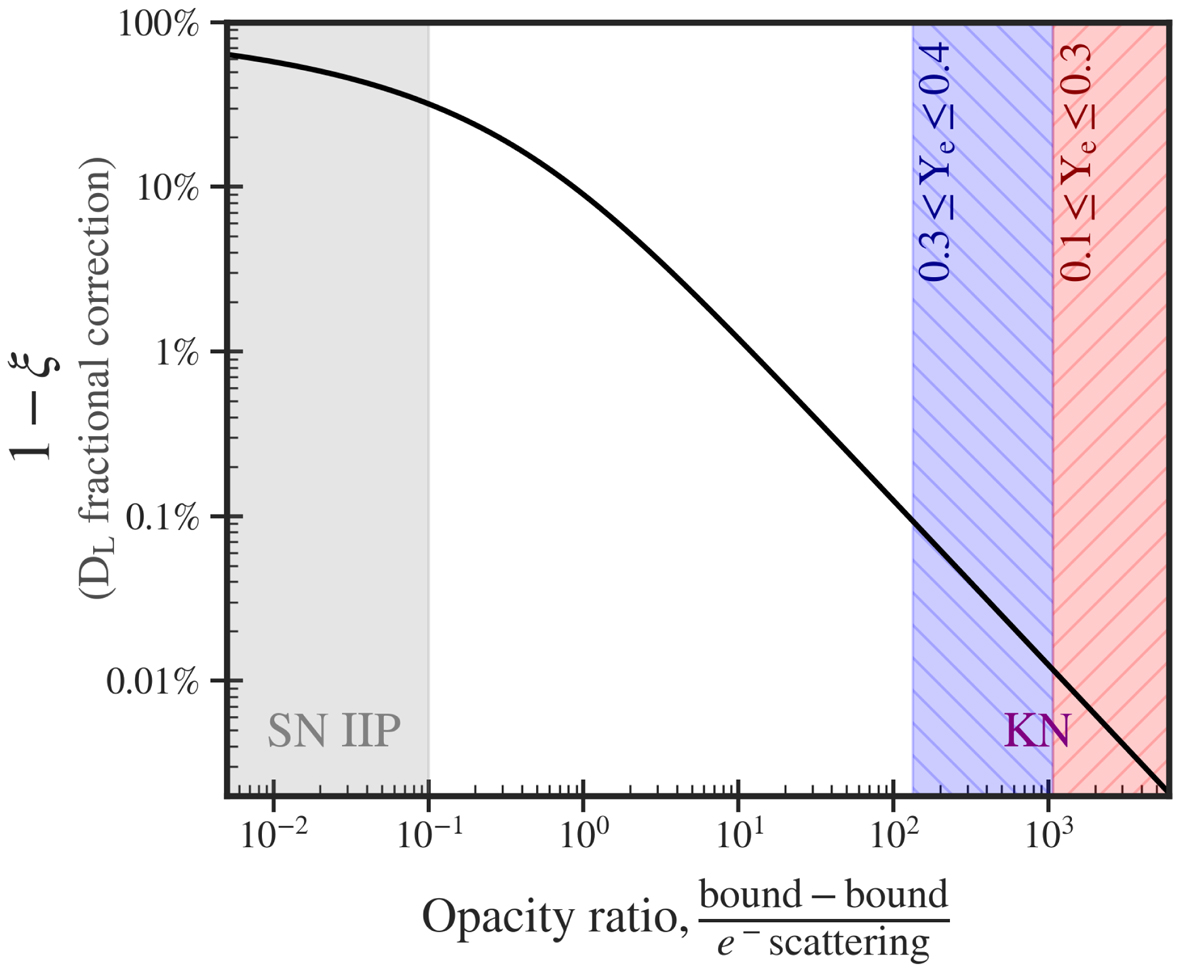Fig. 3.

Download original image
Fractional correction to the estimated luminosity distance from dilution factors, 1 − ξ, as a function of opacity ratio, κb − b/κe−scat. As the opacity ratio is a function of wavelength, we report the integrated Planck mean opacity. When electron-scattering dominates, as in the case of SN IIP (Sim 2017), the photospheric radius inferred from lines will be larger than the thermalisation radius of the blackbody inferred from its flux, thus requiring the introduction of a significant dilution-factor (grey region). However, for neutron-star mergers the bound–bound opacity dominates over electron-scattering, regardless of whether one uses opacities based on lists of known lines (e.g., Tanaka & Hotokezaka 2013) or the higher opacities used in this figure, which are based on more complete theoretically-calculated line-lists (Tanaka et al. 2020). Such dominance of the bound–bound opacity implies negligible corrections to the distance (blue and red hatched region).
Current usage metrics show cumulative count of Article Views (full-text article views including HTML views, PDF and ePub downloads, according to the available data) and Abstracts Views on Vision4Press platform.
Data correspond to usage on the plateform after 2015. The current usage metrics is available 48-96 hours after online publication and is updated daily on week days.
Initial download of the metrics may take a while.


